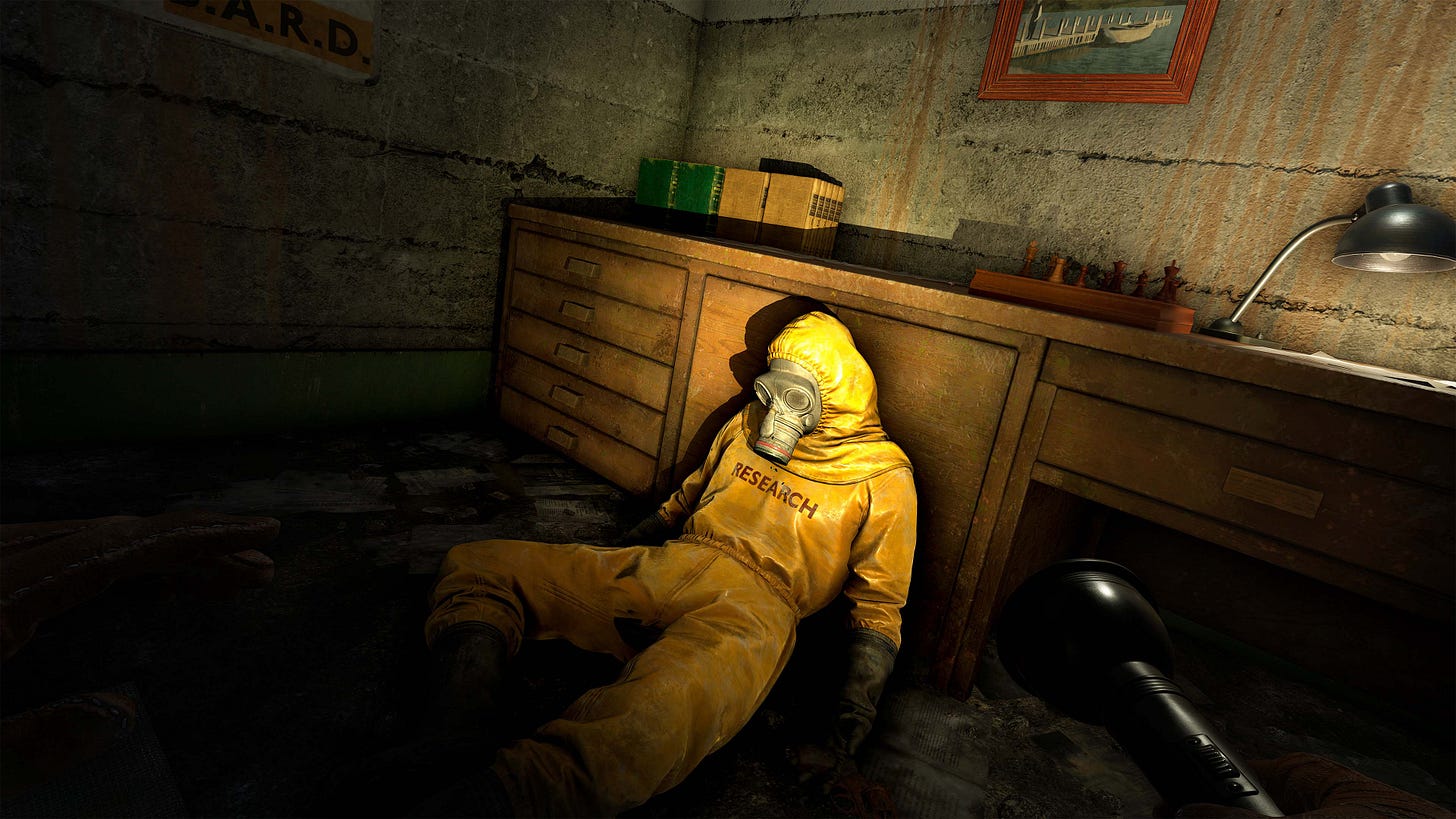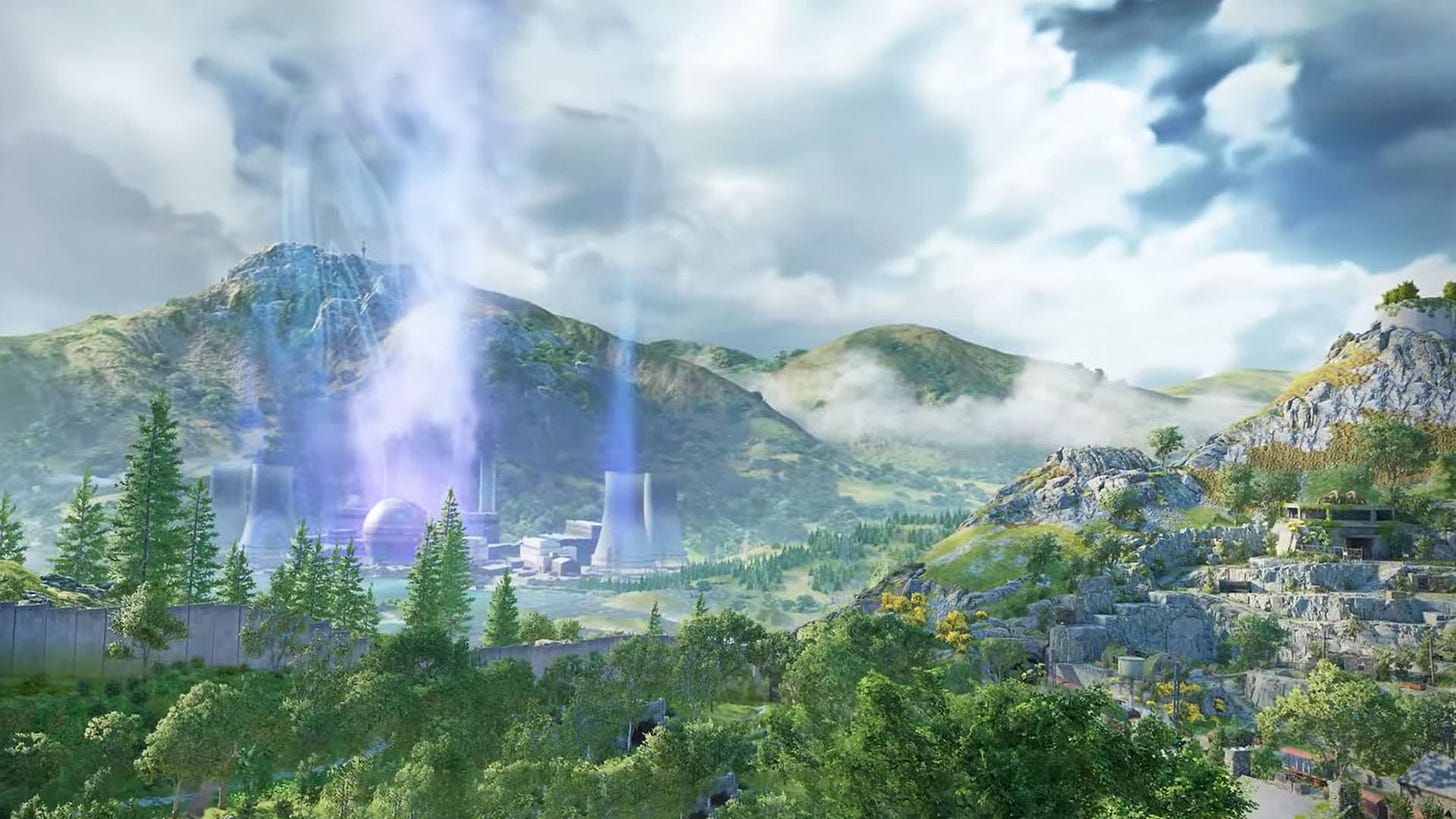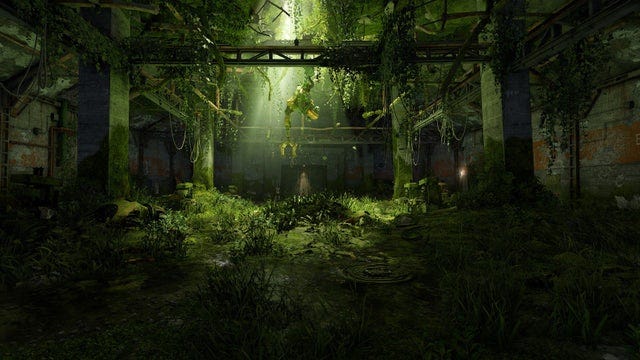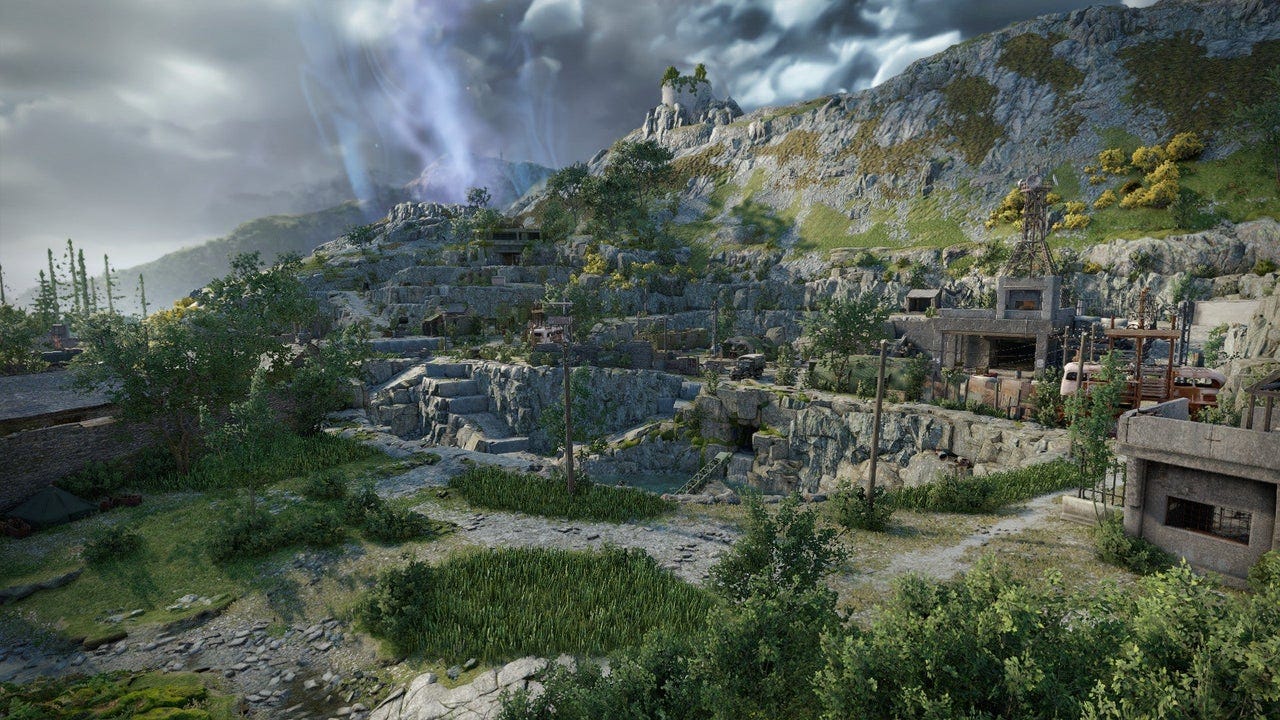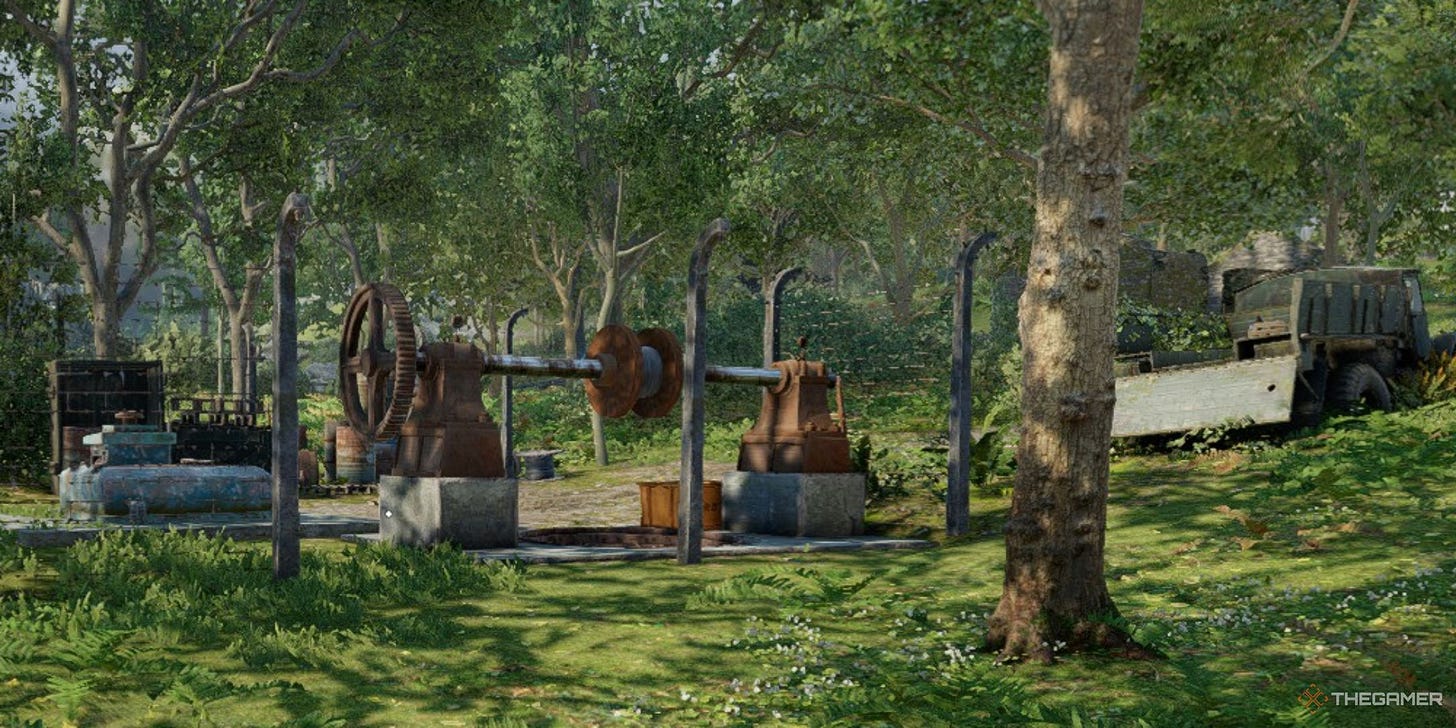Environmental Storytelling in Game Design: How Atomfall Crafts Immersive Narratives Without Words
A comprehensive guide to environmental storytelling in games - how to combine level design, art, and atmosphere to craft rich and immersive narrative worlds without relying on dialogue or cutscenes.
By Nerina van Wyk
Environmental storytelling in video games is a powerful design approach that uses level design, art, and atmosphere to convey narrative without relying on dialogue or cutscenes. By embedding stories in the world itself through visual cues, spatial layout, and sensory details, developers create rich, immersive experiences that engage players emotionally and intellectually. Rebellion Developments’ Atomfall, released on March 27, 2025, exemplifies this craft, transforming a post-apocalyptic 1960s Britain into a haunting narrative canvas. This guide explores the principles of environmental storytelling, using Atomfall as a case study to illustrate how games can tell stories through their worlds.
What Is Environmental Storytelling?
Environmental storytelling involves designing game environments to communicate narrative elements implicitly. Instead of explicit exposition, the world’s visuals, objects, and layout reveal the story. This technique encourages players to explore, interpret, and piece together lore, fostering a sense of discovery. Common methods include:
Visual Cues: Objects like abandoned letters or broken machinery hint at past events.
Spatial Design: Level layouts guide player movement and evoke emotions, such as open spaces for vulnerability or tight corridors for tension.
Atmospheric Elements: Lighting, sound, and weather amplify mood and context.
Atomfall excels in this approach. Set in a quarantine zone five years after a fictionalised Windscale nuclear disaster, the game uses decaying villages, rusted outposts, and overgrown landscapes to depict a world shattered by catastrophe. Homes filled with faded photographs, scattered ration cans, and unfinished letters create a palpable sense of loss, inviting players to uncover the disaster’s impact without overt narration.
Level Design: Guiding Narrative Through Space
Level design is the backbone of environmental storytelling, shaping how players navigate and interpret the world. Effective designs balance guidance and freedom, ensuring players encounter narrative elements organically. Key strategies include:
Non-Linear Exploration: Open or semi-open worlds encourage discovery of hidden areas with lore-rich content.
Environmental Affordances: Objects or paths that invite interaction, like readable notes or climbable ruins, embed the story in gameplay.
Spatial Storytelling: Layouts that reflect narrative themes, such as fortified bunkers signaling conflict or desolate fields evoking abandonment.
In Atomfall, interconnected zones inspired by Rebellion’s compact Sniper Elite maps create a dense, purposeful world. Players explore bunkers, laboratories, and farmhouses at their own pace, finding cryptic notes, audio logs, and visual clues that reveal the disaster’s origins and survivors’ fates. Unlike sprawling open-world games, Atomfall’s focused design ensures every location—from a vine-covered cottage to a radioactive moor—contributes to the narrative, rewarding curiosity with meaningful discoveries.
Art and Atmosphere: Painting Emotions
Art direction and atmosphere bring environments to life, evoking emotions that deepen narrative impact. Visual and auditory elements work together to create a cohesive mood. Techniques include:
Textural Details: Weathered surfaces or overgrown vegetation convey the passage of time.
Dynamic Systems: Weather and lighting shifts, like fog or storms, enhance immersion and tension.
Sound Design: Ambient sounds, such as wind or distant cries, reinforce the world’s tone.
Atomfall’s art and atmosphere are integral to its storytelling. Fog-drenched moors, dark ruins, and dynamic weather—rain, snow, or fleeting sunlight—create a sense of isolation and dread. Textures like rusted metal and cracked concrete reflect the world’s decay, while ambient sounds, from creaking doors to eerie creature calls, make the environment feel alive and hostile. Drawing from British sci-fi like Day of the Triffids and Cold War paranoia, Atomfall crafts a distinctly British apocalypse that feels both alien and familiar.
Psychological Impact: Making Players Feel the Story
Environmental storytelling’s strength lies in its ability to evoke emotions without words. By manipulating space, visuals, and sound, developers can instill feelings like fear, wonder, or melancholy. Strategies include:
Spatial Dynamics: Open areas create exposure; confined spaces heighten claustrophobia.
Absence and Silence: Empty environments or quiet moments amplify unease.
Player Agency: Allowing players to uncover story at their own pace fosters investment.
Atomfall uses these techniques to profound effect. Open fields with sparse cover keep players on edge, while narrow corridors amplify a sense of being hunted. The absence of human presence and pervasive silence position players as intruders in a world no longer theirs. By prioritizing environmental cues over action-heavy sequences, Atomfall cultivates a slow-burning dread that resonates emotionally, making the narrative feel personal and immersive.
Technical Foundations: Building the World
Creating believable environments requires robust technical tools. Modern game engines enable developers to craft detailed, responsive worlds that support storytelling. Common tools and techniques include:
Game Engines: Unreal Engine 5’s Nanite and Lumen systems allow high-fidelity geometry and dynamic lighting.
Foliage Systems: Tools like SpeedTree (or Unreal’s native foliage systems) generate realistic vegetation.
Audio Systems: Dynamic sound engines blend ambient effects, like footsteps or wind, in real-time.
Atomfall leverages Unreal Engine 5 to realize its vision. Nanite enables intricate environments, from crumbling stone walls to overgrown forests, while Lumen’s dynamic lighting enhances mood with shadows and fleeting sunlight. Vegetation, likely crafted with tools like SpeedTree, adds realism to moors and woodlands. Unreal’s MetaSounds system delivers immersive audio, from gravel crunching underfoot to wind howling through ruins. These technical choices ensure Atomfall’s world feels cohesive and responsive, grounding its narrative in a tangible reality.
Case Study: Atomfall’s Narrative World
Atomfall demonstrates how environmental storytelling can elevate a game. Its environments actively convey the story, with players uncovering lore through exploration. A bunker’s faded warning signs hint at military cover-ups; a farmhouse’s vine-covered relics suggest years of neglect. The game’s use of the Windscale fire as a historical anchor ties its speculative fiction to a relatable British context, deepening player investment. Every location feels purposeful, guiding players toward a broader narrative of survival, mystery, and paranoia.
Beyond Atomfall, these principles apply broadly. Games like The Last of Us use overgrown cities to depict societal collapse, while Bloodborne’s gothic architecture evokes cosmic horror. By prioritizing environment over exposition, developers create worlds that feel alive and invite player interpretation.
Conclusion
Environmental storytelling is a cornerstone of immersive game design, blending level design, art, and atmosphere to craft narratives that resonate without words. Atomfall exemplifies this approach, using its post-apocalyptic British setting to deliver a haunting, player-driven story. Its interconnected zones, weathered art, and dynamic atmosphere show how environments can speak louder than dialogue or cutscenes.
For developers, Atomfall offers a blueprint: design spaces that guide exploration, use art to evoke emotion, and leverage technology to ensure immersion. For players, it’s a reminder of the power of a world that tells its own story. By mastering environmental storytelling, games can transcend traditional narratives, creating experiences that linger long after the screen fades to black.

